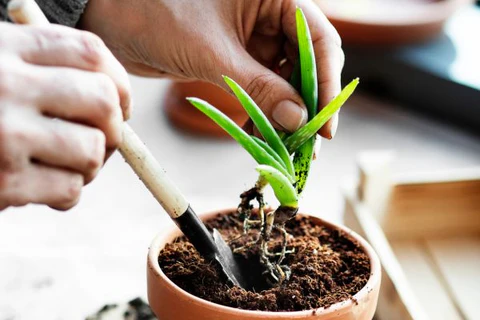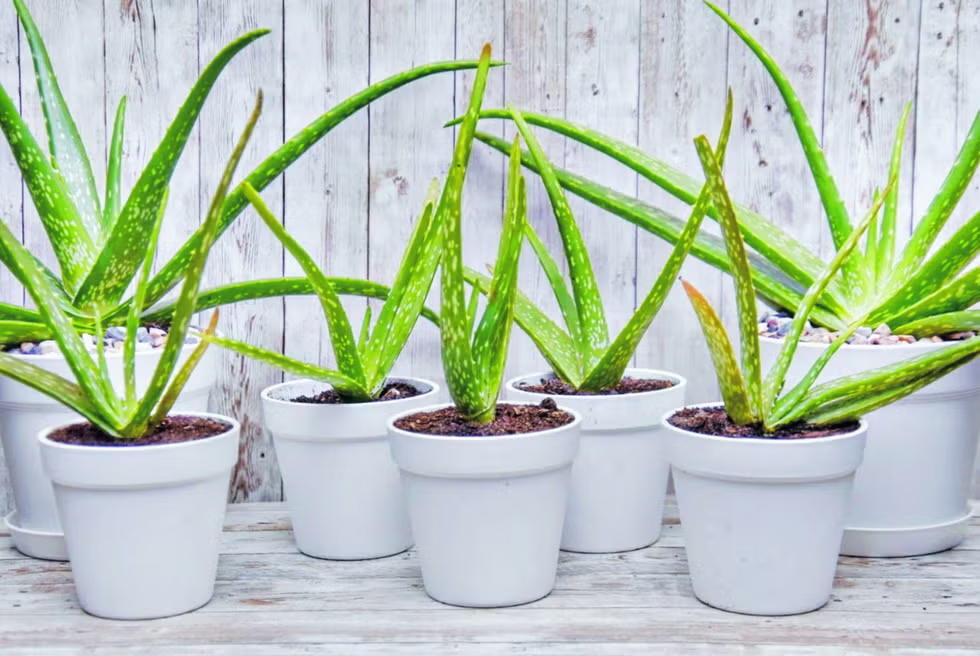Aloe vera, with its plump, sword-shaped leaves and soothing gel, is one of the most versatile and popular plants in the world. Beyond its ornamental charm, this succulent is famous for its medicinal, skincare, and air-purifying benefits. The best part? Aloe vera is incredibly easy to grow at home, whether in a sun-drenched kitchen window or a backyard container.
If you’ve ever wanted to enjoy this healing plant right at your fingertips, this detailed guide will walk you through how to plant an aloe vera plant, care for it, and harvest its natural goodness.

Why Grow Aloe Vera at Home?
Growing aloe vera offers several practical and aesthetic benefits:
- Natural healer: Its gel soothes burns, cuts, acne, and dry skin.
- Low-maintenance: Requires minimal watering and thrives on neglect.
- Air purifier: Aloe vera helps remove toxins from the air.
- Stylish décor: Its bold leaves add a fresh, modern look to any room or garden.
- Multi-purpose: The gel can be used in skincare, haircare, and even natural remedies.

Best Conditions for Planting Aloe Vera
Before you start planting, it’s essential to understand what aloe vera loves:
- USDA Zones: 8–11 outdoors; indoors anywhere with ample sunlight.
- Light: Prefers bright, indirect sunlight or partial shade outdoors.
- Soil: Well-draining, sandy or cactus potting mix.
- Water: Minimal — it thrives in dry conditions.
- Temperature: 55°F–80°F (13°C–27°C); protect from frost.

How to Plant an Aloe Vera Plant: Step-by-Step
What You’ll Need:
- Healthy aloe vera plant or pup (baby offset)
- Terra-cotta or clay pot with drainage holes
- Cactus or succulent potting mix (or make your own)
- Small garden trowel
- Pebbles or gravel (optional, for better drainage)

Step 1: Choose the Right Aloe Vera Plant
You can start with either a nursery-bought aloe vera plant or propagate from an existing plant’s pup — small offshoots that grow around the mother plant’s base.
Pro tip:
Choose a plant with firm, green leaves free of spots, wilting, or disease.
Step 2: Pick the Perfect Pot
Aloe vera doesn’t like soggy roots, so select a terra-cotta or clay pot with a drainage hole. These materials allow the soil to dry out faster, preventing root rot.
Size:
The pot should be slightly larger than the root ball, with about 1–2 inches of extra space around it.
Step 3: Prepare the Soil
Use a well-draining succulent or cactus mix. You can also mix your own:
- 1 part potting soil
- 1 part perlite or coarse sand
- 1 part small pebbles or gravel
This ensures the roots stay dry and healthy.
Step 4: Remove and Prepare the Aloe Vera Plant
If using a pup:
- Gently loosen the soil around the pup.
- Separate it from the mother plant using a clean, sharp knife if necessary.
- Let the pup sit in a dry, shaded area for 24–48 hours.
This allows the cut or broken roots to form a protective callus, reducing the risk of rot.
If using a store-bought plant:
- Remove it from the nursery container and gently shake off excess soil.
- Trim off any dead or damaged roots.
Step 5: Plant the Aloe Vera
- Place a layer of small pebbles or gravel at the bottom of the pot (optional).
- Fill the pot about two-thirds full with the potting mix.
- Position the plant in the center.
- Backfill with soil, leaving about ½ inch of space from the top of the pot.
- Gently press the soil down around the base.
Step 6: Water Lightly
After planting, wait 1–2 days before watering to let the roots settle and calluses heal.
When you do water:
- Drench the soil thoroughly, then let all excess water drain out.
- Allow the soil to dry out completely before watering again.
How to Care for Aloe Vera Plant
Light:
Place your aloe vera where it receives 6–8 hours of bright, indirect sunlight daily. If indoors, a south- or west-facing window is perfect.
Watering:
Water every 2–3 weeks in warmer months, less in winter. Overwatering is the most common way to harm aloe plants.
Fertilizing:
Feed once in spring and summer with a diluted, balanced fertilizer (10-40-10) or a cactus-specific fertilizer.
Temperature:
Ideal range is 55°F–80°F (13°C–27°C). Bring potted plants indoors when nighttime temperatures drop below 50°F.
Repotting:
Aloe vera grows slowly, but you’ll need to repot every 2–3 years or when it outgrows its pot.
Pest Control:
Watch for common pests like mealybugs or aphids. Wipe leaves with a damp cloth or spray with diluted neem oil.
How to Harvest Aloe Vera Gel
Once your aloe vera plant has matured (at least a year old), you can harvest its healing gel.
Here’s how:
- Choose a thick, healthy outer leaf.
- Cut it close to the base with a clean, sharp knife.
- Stand the leaf upright in a cup for 10 minutes to drain the yellow latex (aloin), which can be irritating.
- Slice off the spiky edges.
- Peel away the green skin on one side.
- Scoop out the clear gel with a spoon.
Store the gel:
Keep fresh aloe vera gel in an airtight container in the refrigerator for up to 7 days.
Uses for Aloe Vera
- Sunburn relief: Apply gel directly to burned skin.
- Moisturizer: Hydrate dry skin without greasiness.
- Hair conditioner: Mix with coconut oil for a nourishing hair mask.
- First-aid remedy: Soothe minor cuts, rashes, and insect bites.
- Juice ingredient: Add a small amount (after removing the latex) to smoothies for digestive benefits.
Common Aloe Vera Plant Problems (And Fixes)
1. Brown Tips:
Caused by underwatering, low humidity, or sunburn. Trim the tips and adjust care.
2. Mushy Leaves:
Result of overwatering. Let soil dry completely and reduce watering frequency.
3. Stunted Growth:
May indicate rootbound conditions or lack of sunlight. Repot and move to a sunnier spot.
Fun Aloe Vera Facts
- Aloe vera belongs to the Asphodelaceae family.
- Ancient Egyptians called it the “Plant of Immortality”.
- Cleopatra is believed to have used aloe vera in her beauty rituals.
- There are over 500 aloe species, but Aloe barbadensis miller is the most medicinal.
Final Thoughts
Aloe vera is more than just a houseplant — it’s a resilient, healing companion you’ll want nearby for its soothing gel and sleek, tropical look. Whether you’re an experienced gardener or a curious beginner, planting aloe vera is a simple, satisfying project with plenty of payoffs.
With minimal effort, you can enjoy the benefits of nature’s healer right at your fingertips. So grab a pot, find a sunny window, and let your aloe vera thrive!





Leave A Comment